One of the species with several cultivars in the Cotyledon family is Cotyledon orbiculata. Most variants are commonly referred to as Pig’s Ear, which can lead to a lot of confusion between the very distinct cultivars.

There was even further confusion regarding naming the genus Cotyledon! In medieval times, Pennywort was called Cotyledon and included in the genus: the name, in Greek, referred to a cupped or hollowed shape. In Latin, the addition of orbiculata refers to round and flat or shaped like a disc.
If you end up collecting several of these cultivars, which you probably will, be careful and keep them separate. They can cross very easily and produce further hybridized offspring!
Jump to:
- 1. Cotyledon orbiculata 'Winter Red'
- 2. Cotyledon orbiculata 'Winter Fire'
- 3. Cotyledon orbiculata 'White Platter'
- 4. Cotyledon orbiculata var. oblonga 'Undulata'
- 5. Cotyledon orbiculata var. oblonga 'Macrantha'
- 6. Cotyledon orbiculata var. oblonga 'Flavida'
- 7. Cotyledon orbiculata 'Silver Peak'
- 8. Cotyledon orbiculata 'Rhodes'
- 9. Cotyledon orbiculata 'Lighthouse Road'
- 10. Cotyledon orbiculata 'Huisrivier Pass'
- 11. Cotyledon orbiculata 'Hamaji Silver'
- 12. Cotyledon orbiculata 'Greytown Spoons'
- 13. Cotyledon orbiculata 'Cinderella'
- 14. Cotyledon orbiculata 'Big Wave'
- 15. Cotyledon Orbiculata Var. Elk Horns
- 16. Cotyledon orbiculata ‘Happy Young Lady’
1. Cotyledon orbiculata 'Winter Red'
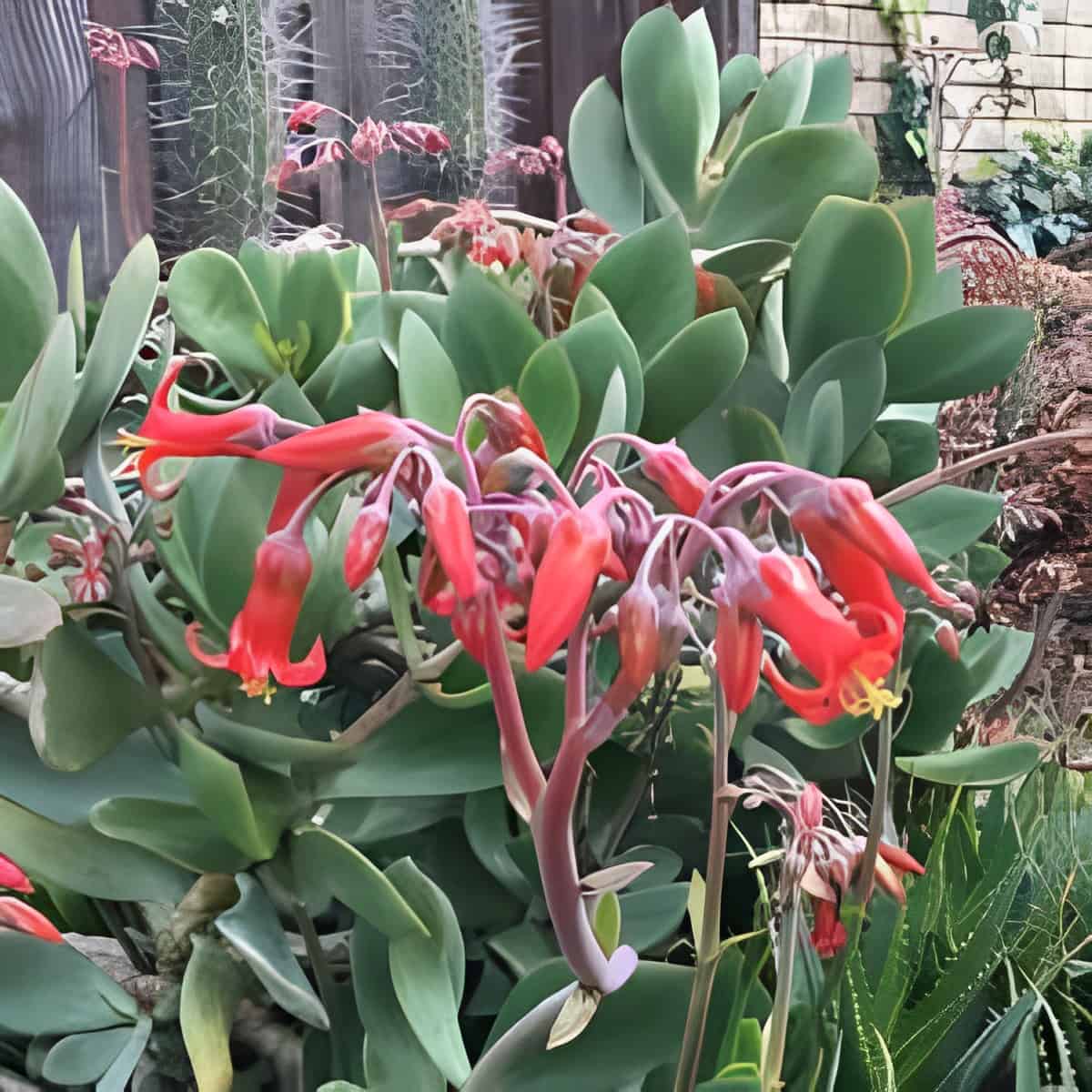
| Maximum Height: | Up to 5 feet |
| Maximum Width: | Up to 4 feet |
| Watering Needs: | Bi-weekly or monthly soak based on the environment |
| Soil Needs: | Gritty well-draining mix |
| Light Needs: | Full sun to partial shade |
| Hardiness Zone(s): | Zone 9 and up |
| Leaf Type: | Paddle shape |
| Bloom Type: | Orange to red bell-shaped flower |
Probably the most representative of the variants is Winter Red. It looks like a traditional C. orbiculata but tends to have a slightly longer paddle shape. Unlike many others, this cultivar doesn’t have a thick coating of farina and prefers more shade than full sun. Use it as ground cover or as a potted plant; either will produce beautiful orange blooms.
2. Cotyledon orbiculata 'Winter Fire'
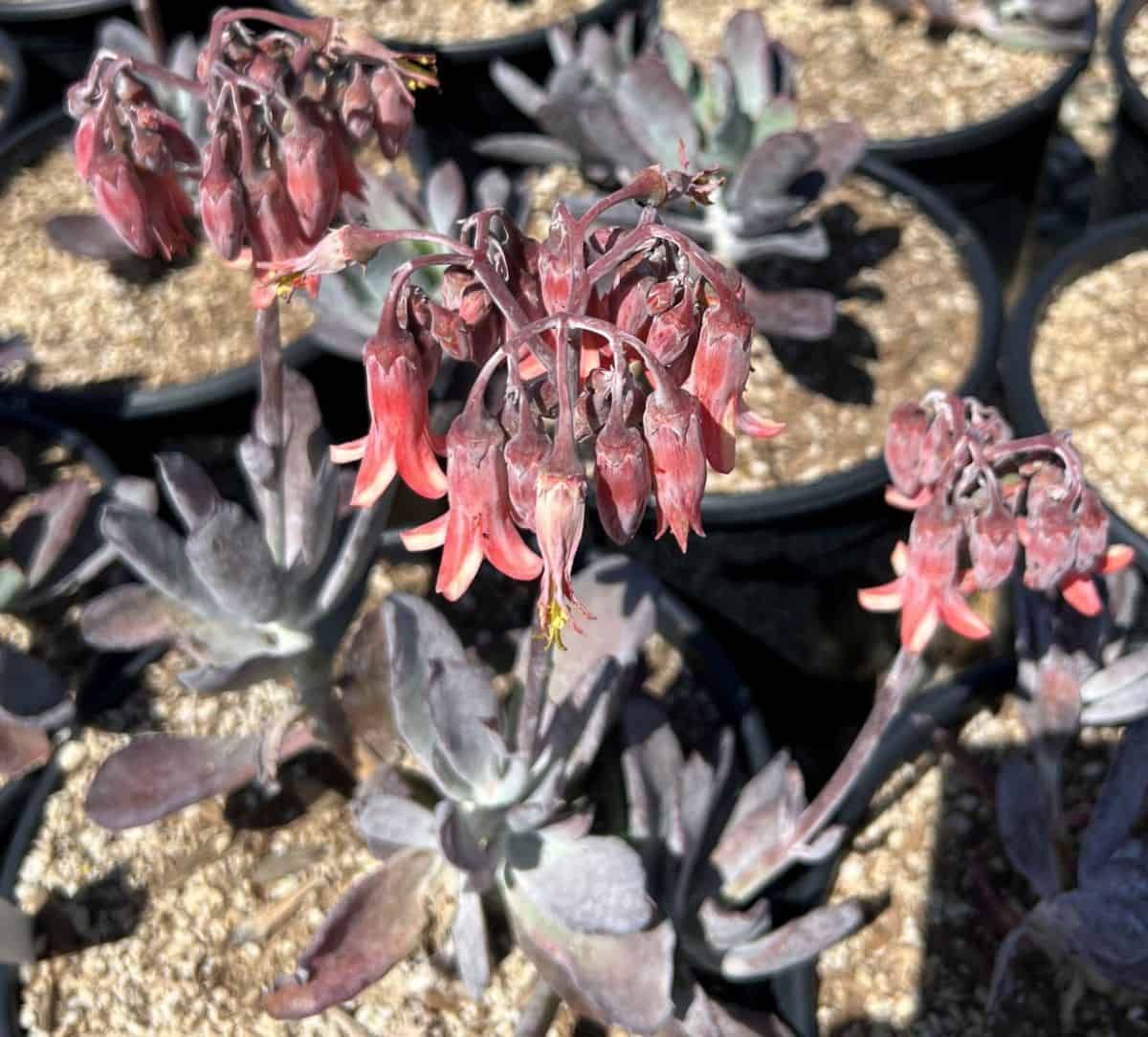
| Maximum Height: | Up to 2 feet |
| Maximum Width: | Up to 2 feet |
| Watering Needs: | Bi-weekly or monthly soak based on the environment |
| Soil Needs: | Gritty well-draining mix |
| Light Needs: | Full sun to partial shade |
| Hardiness Zone(s): | Zone 9 and up |
| Leaf Type: | Broad and lance-shaped with a heavy coating of farina |
| Bloom Type: | Orange and bell-shaped, outside of flower is coated with farina. |
You would think that with the names Winter Red and Winter Fire, the two would look very similar. But that is far from the truth! What differentiates the two is that Winter Fire is heavily coated with farina, and the leaves tend to be more narrow than Winter Red. The farina can hide the red lines along the margins, and it even coats the outside of the flowers. This makes it the perfect specimen for full sun.
3. Cotyledon orbiculata 'White Platter'
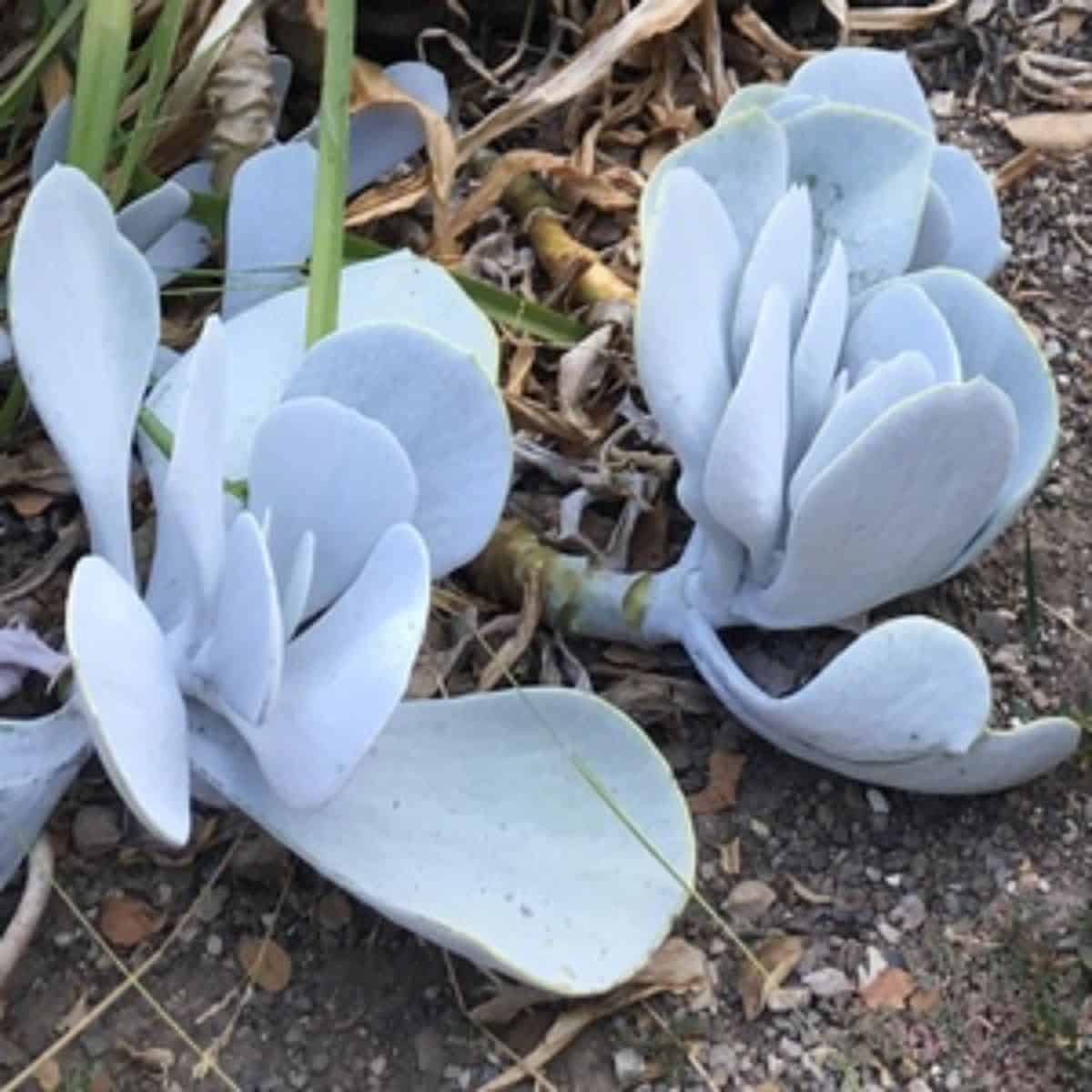
| Maximum Height: | Up to 3 feet |
| Maximum Width: | Up to 3 feet |
| Watering Needs: | Bi-weekly or monthly soak based on the environment |
| Soil Needs: | Gritty well-draining mix |
| Light Needs: | Full sun to partial shade |
| Hardiness Zone(s): | Zone 9 and up |
| Leaf Type: | Slightly scooping paddle; light blue-gray coloration |
| Bloom Type: | Orange, bell-shaped flower |
Also called Whitewash, this is one of several cultivars that tend to take on a white or silvery look. The major difference between the others is that the paddle is slightly scooped and stays within a three-foot radius. The paddles are strikingly white with barely a green to them.
4. Cotyledon orbiculata var. oblonga 'Undulata'
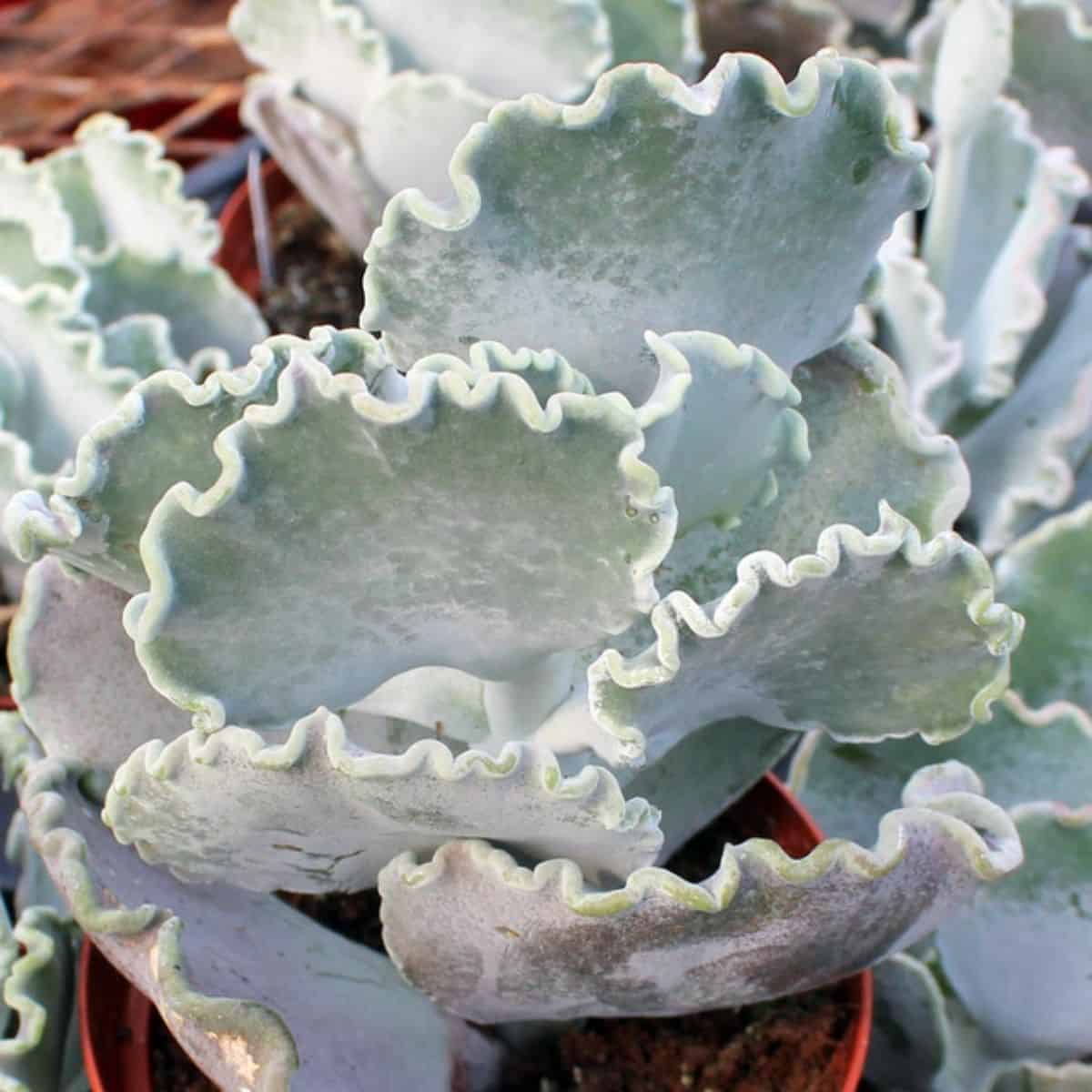
Buy it from:
| Maximum Height: | Up to 2 feet |
| Maximum Width: | Barely 1 foot |
| Watering Needs: | Bi-weekly or monthly soak based on the environment |
| Soil Needs: | Gritty well-draining mix |
| Light Needs: | Full sun to partial shade |
| Hardiness Zone(s): | Zone 9 and up |
| Leaf Type: | Paddles with undulating margins; heavy coating of farina. |
| Bloom Type: | Red-orange bell-shaped flowers |
One of the much smaller variants of C. orbiculata, this species looks like tiny little dumplings dusted with powdered sugar. The top edges are heavily undulated, which is what gives them their characteristic look. Sometimes, this species is also referred to as C. undulata and even C. orbiculata undulata.
5. Cotyledon orbiculata var. oblonga 'Macrantha'
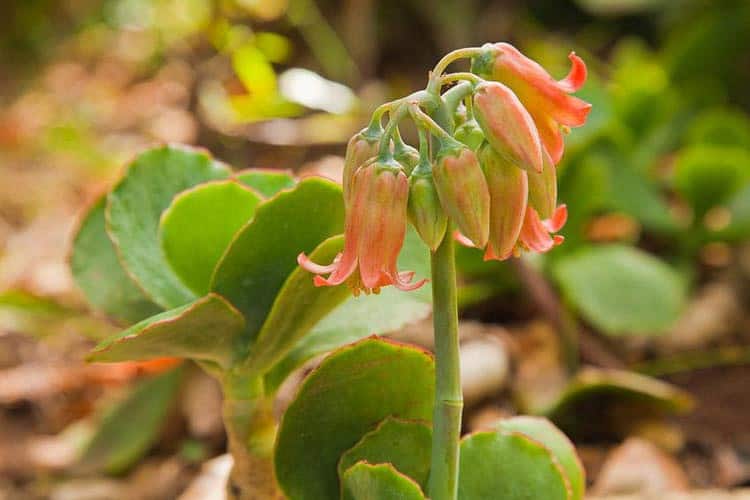
| Maximum Height: | Up to 3 feet |
| Maximum Width: | Up to 3 feet |
| Watering Needs: | Bi-weekly or monthly soak based on the environment |
| Soil Needs: | Gritty well-draining mix |
| Light Needs: | Full sun to partial shade |
| Hardiness Zone(s): | Zone 9 and up |
| Leaf Type: | Light green paddle with a small red margin |
| Bloom Type: | Red bell-shaped flower |
Another consistent shrub, Macrantha, is a very light green with striking red margins. The margins are a more intense red than other species, and it is also without farina. As it doesn’t have anywhere near as much protection as other C. orbiculata variants, it will need partial shade and only cool full sun.
6. Cotyledon orbiculata var. oblonga 'Flavida'
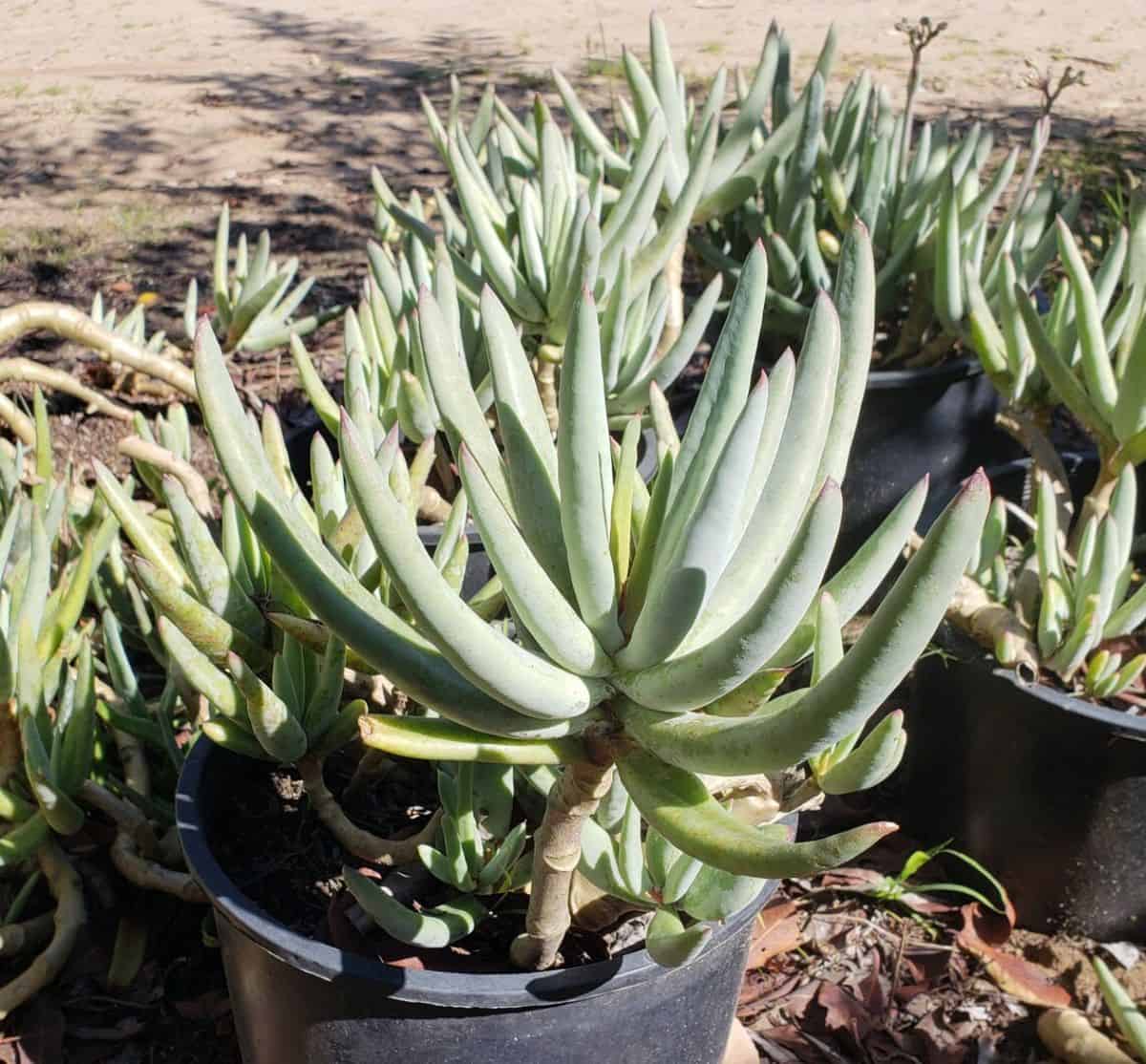
Buy it from:
| Maximum Height: | Up to 2 feet |
| Maximum Width: | Up to 4 feet |
| Watering Needs: | Bi-weekly or monthly soak based on the environment |
| Soil Needs: | Gritty well-draining mix |
| Light Needs: | Full sun to partial shade |
| Hardiness Zone(s): | Zone 9 and up |
| Leaf Type: | Gray-green finger-like leaves |
| Bloom Type: | Light orange to peach bell-shaped flowers |
One of the few that goes off the tracks in shape is Flavida. While not shaped like ‘Lady’s Fingers’ or ‘Happy Young Lady’, it does have its own unique shape. To be honest, they look more like carrots than anything else, and they produce flowers that are equally orange to peach. Another heavy farina coating on this species makes it a perfect shrub for full sun areas.
7. Cotyledon orbiculata 'Silver Peak'
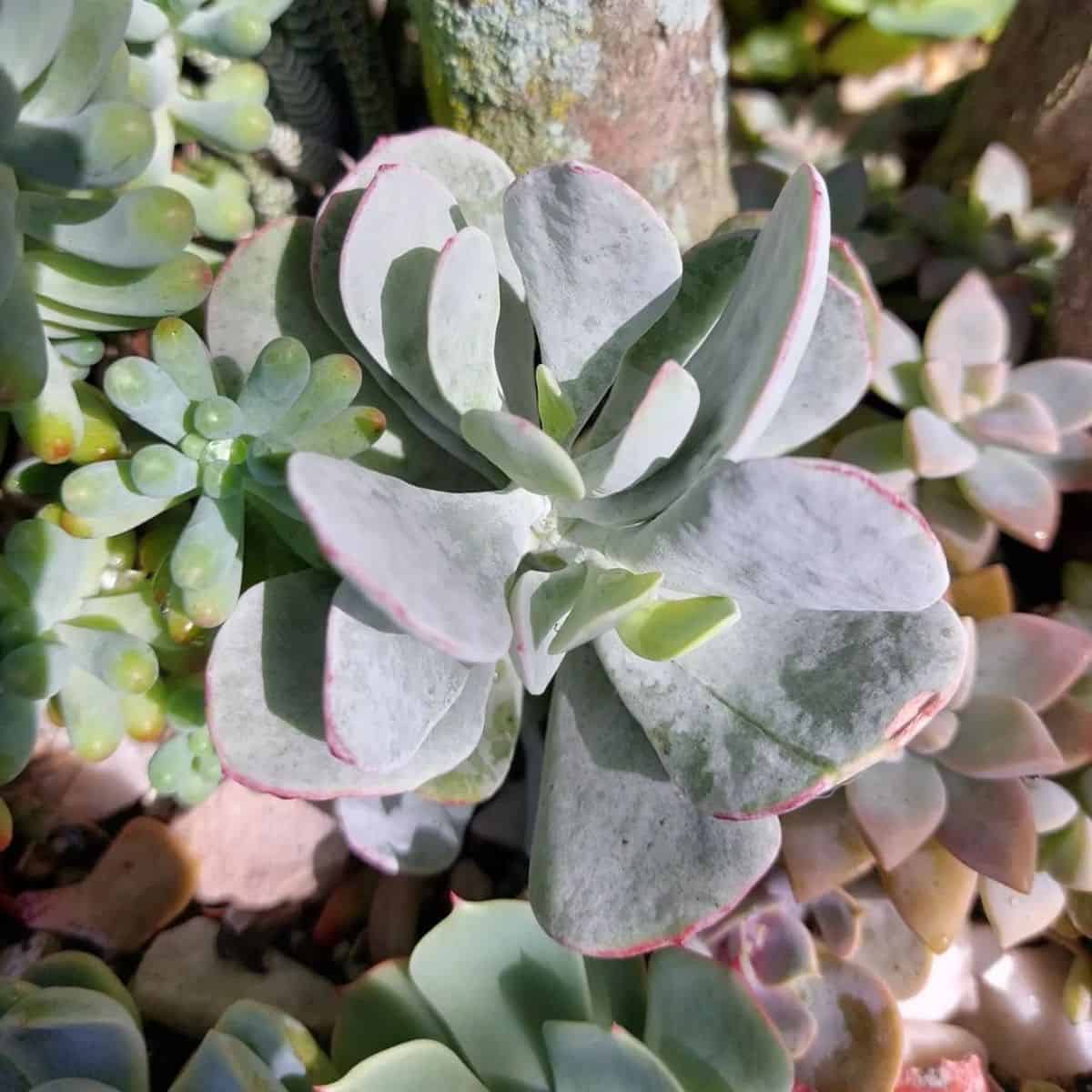
Buy it from:
| Maximum Height: | Up to 2 feet |
| Maximum Width: | Up to 2 feet |
| Watering Needs: | Bi-weekly or monthly soak based on the environment |
| Soil Needs: | Gritty well-draining mix |
| Light Needs: | Full sun to partial shade |
| Hardiness Zone(s): | Zone 9 and up |
| Leaf Type: | A combination between a paddle and lance shape, very thick leaves with maroon margins |
| Bloom Type: | Orange bell-shaped flower |
As stated earlier, there are several silver or white varieties. What sets this cultivar apart is just how amazingly thick the paddles are. They look like a hybrid between finger type C. orbiculata and paddle type O.orbiculata. The thickness at the end of the elongated paddle makes it almost seem as though the leaves would fall off with how top-heavy they are.
8. Cotyledon orbiculata 'Rhodes'
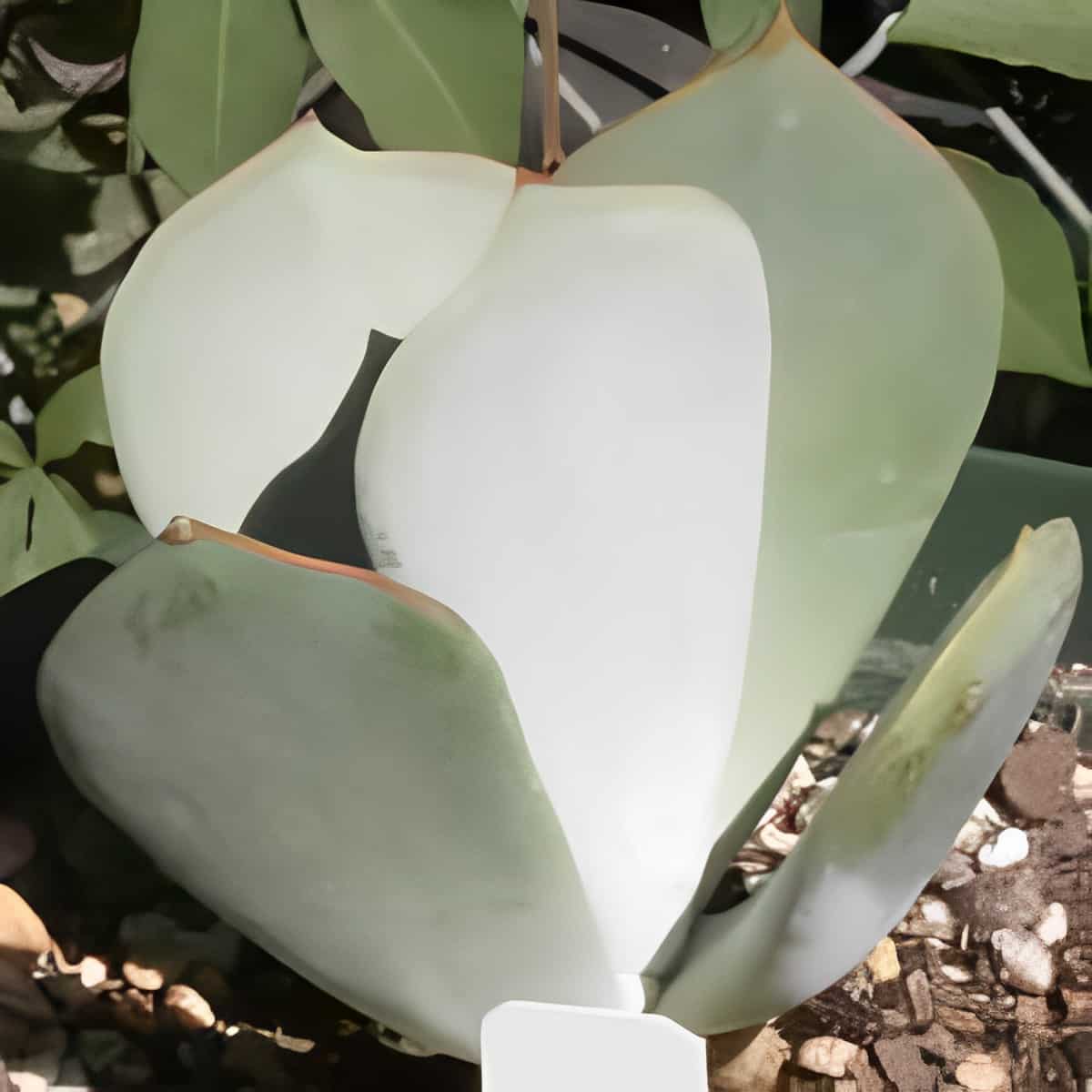
| Maximum Height: | Up to 1 foot |
| Maximum Width: | Up to 1 foot |
| Watering Needs: | Bi-weekly or monthly soak based on the environment |
| Soil Needs: | Gritty well-draining mix |
| Light Needs: | Full sun to partial shade |
| Hardiness Zone(s): | Zone 9 and up |
| Leaf Type: | Thicker, pointed paddle with minimal red margin. Narrow at the base. |
| Bloom Type: | Orange bell-shaped flower |
A rare and hard-to-find cultivar, Rhodes is specifically grown in the northeastern area of East Cape, South Africa, by Carl Schoenfeld of Yucca Do Nursery. The paddles are far more rectangular in shape with minimal red margins. Thick-based leaves seemingly grow right from the soil; however, this species is known to start a little more deeply in the ground than other species.
9. Cotyledon orbiculata 'Lighthouse Road'
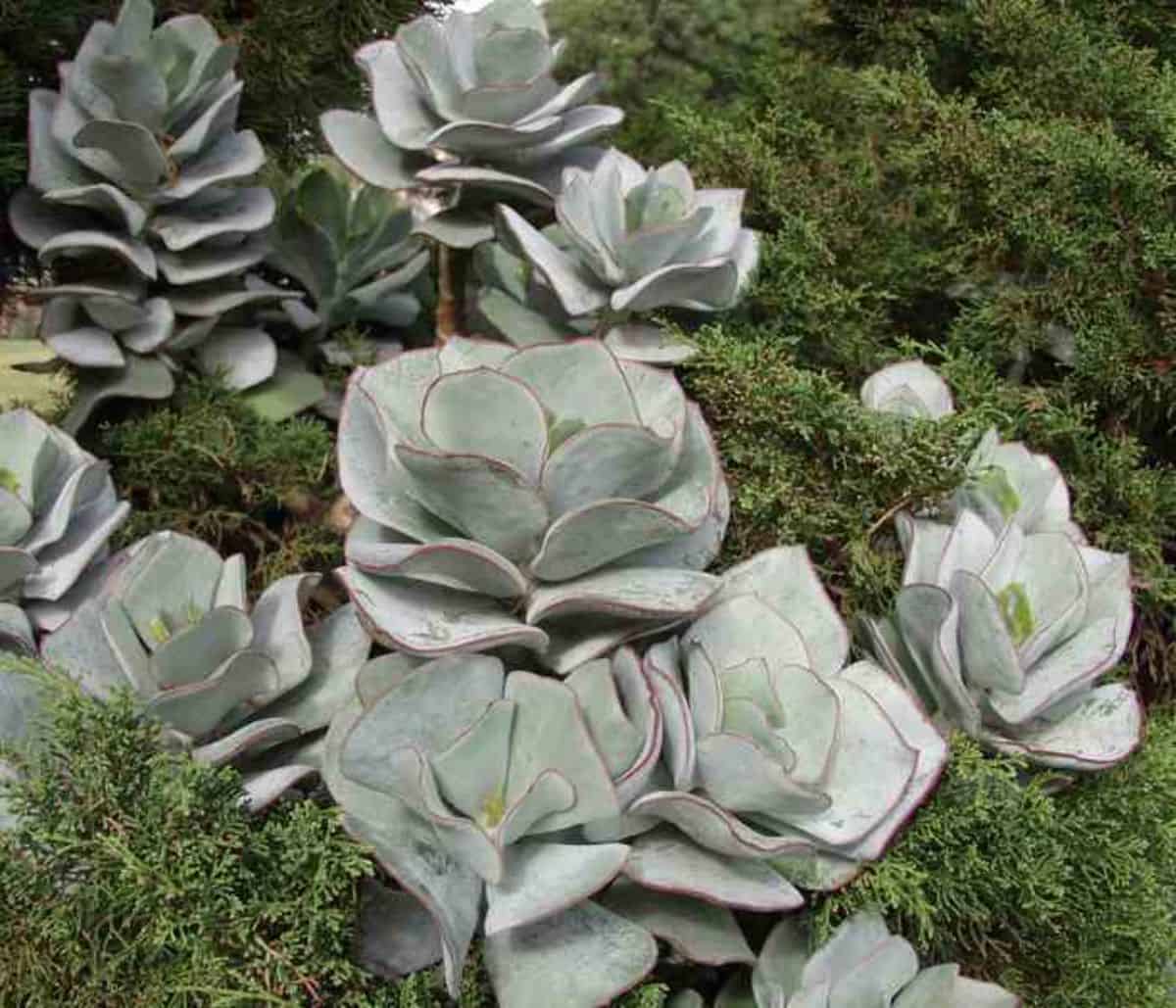
| Maximum Height: | Up to 1 foot |
| Maximum Width: | Up to 3 feet |
| Watering Needs: | Bi-weekly or monthly soak based on the environment |
| Soil Needs: | Gritty well-draining mix |
| Light Needs: | Full sun to partial shade |
| Hardiness Zone(s): | Zone 9 and up |
| Leaf Type: | Slightly curved paddle. The spine at the tip is not always pronounced. More undulate than other species. |
| Bloom Type: | Orange bell-shaped flower |
One of my favorites, this species tends to bush and grow into groups of rosettes that remind me of heads of lettuce. Each paddle curves inward and also shows more of a purple-colored margin and is more undulated along the margins. New leaves are a striking lime green; however, as they age, they grow thick coats of farina that protect them in full sun.
10. Cotyledon orbiculata 'Huisrivier Pass'

| Maximum Height: | Up to 1 foot |
| Maximum Width: | Up to 2 feet |
| Watering Needs: | Bi-weekly or monthly soak based on the environment |
| Soil Needs: | Gritty well-draining mix |
| Light Needs: | Full sun to partial shade |
| Hardiness Zone(s): | Zone 8 and up |
| Leaf Type: | Lance-shaped with a larger lobe towards the tip. Pronounced maroon margin. |
| Bloom Type: | Orange bell-shaped flower |
Some sources state that the Huisriver Pass cultivar is just another name for the parent species, C. orbiculata. However, this information is inaccurate. Huisriver Pass is a cultivar with thick paddles that narrow at the base. The margins are less red and more maroon than the original species.
11. Cotyledon orbiculata 'Hamaji Silver'
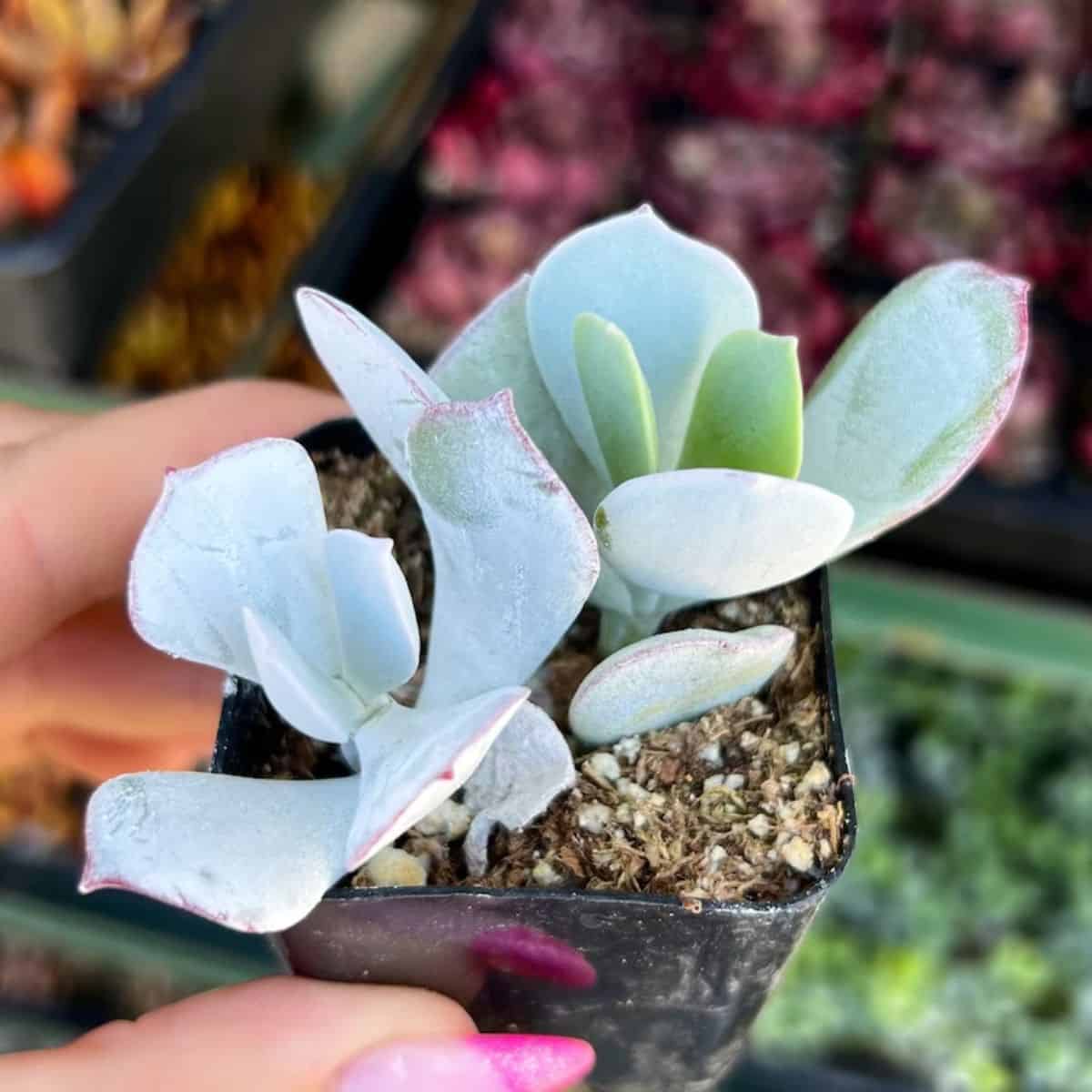
Buy it from:
| Maximum Height: | Up to 2 feet |
| Maximum Width: | Up to 2 feet |
| Watering Needs: | Bi-weekly or monthly soak based on the environment |
| Soil Needs: | Gritty well-draining mix |
| Light Needs: | Full sun to partial shade |
| Hardiness Zone(s): | Zone 9 and up |
| Leaf Type: | Thick leaf with minimal red margins. Silvery in color, larger terminal lobe that thins at the base |
| Bloom Type: | Orange bell-shaped flower |
Another of the silver varieties, the paddle leaves are spaced apart more than other varieties, and despite the thick coating of farina, the red margins can actually be seen. While the color does seem more pink, this species sets itself apart not only in growth type but also with its very large bell-shaped flowers.
12. Cotyledon orbiculata 'Greytown Spoons'
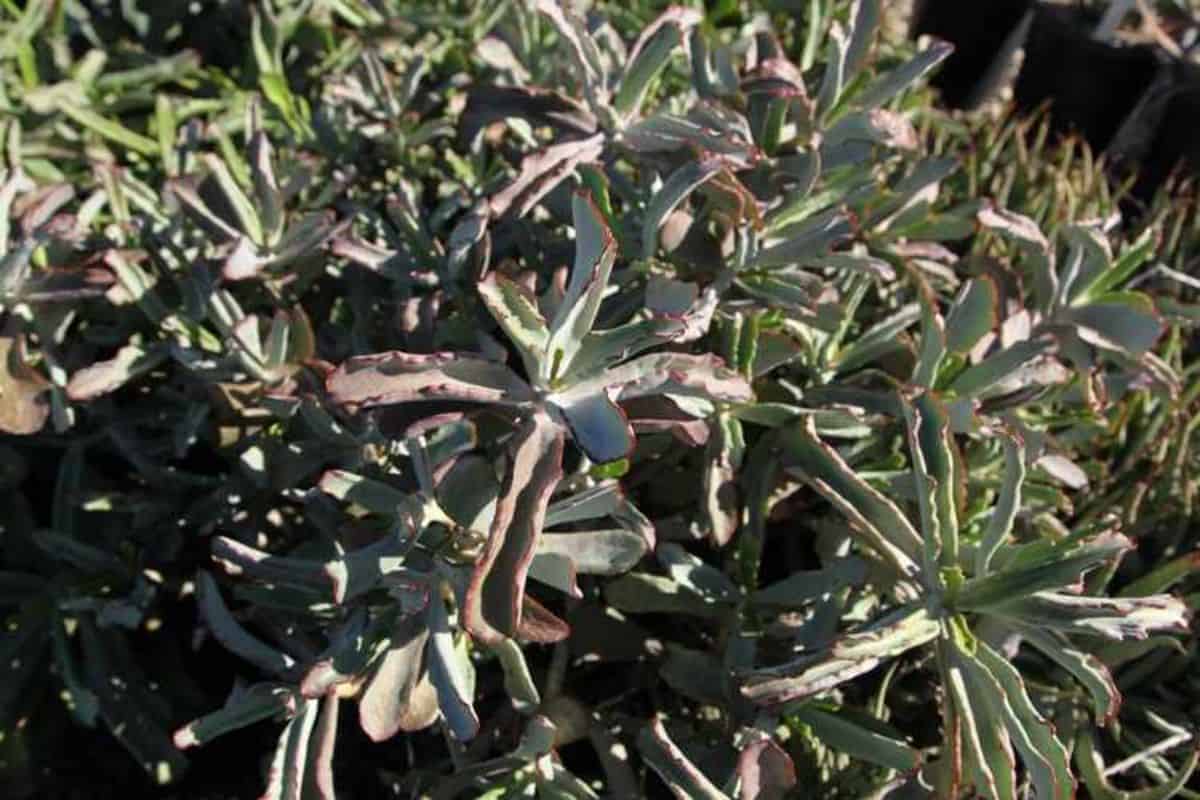
| Maximum Height: | Up to 3 feet |
| Maximum Width: | Up to 3 feet |
| Watering Needs: | Bi-weekly or monthly soak based on the environment |
| Soil Needs: | Gritty well-draining mix |
| Light Needs: | Full sun to partial shade |
| Hardiness Zone(s): | Zone 9 and up |
| Leaf Type: | Thin leaves that curl inward. Margins are undulated with marked red margins |
| Bloom Type: | Orange bell-shaped flower |
An absolute rarity that can only be found in Capetown nurseries, Greytown Spoons looks like its paddles have shriveled up into spoons! Because of how the margins undulate, the species can also look pronged like Elk Horn; however, when you look carefully, it is easy to see that the undulated and curvature of the leaves are very drastic.
13. Cotyledon orbiculata 'Cinderella'
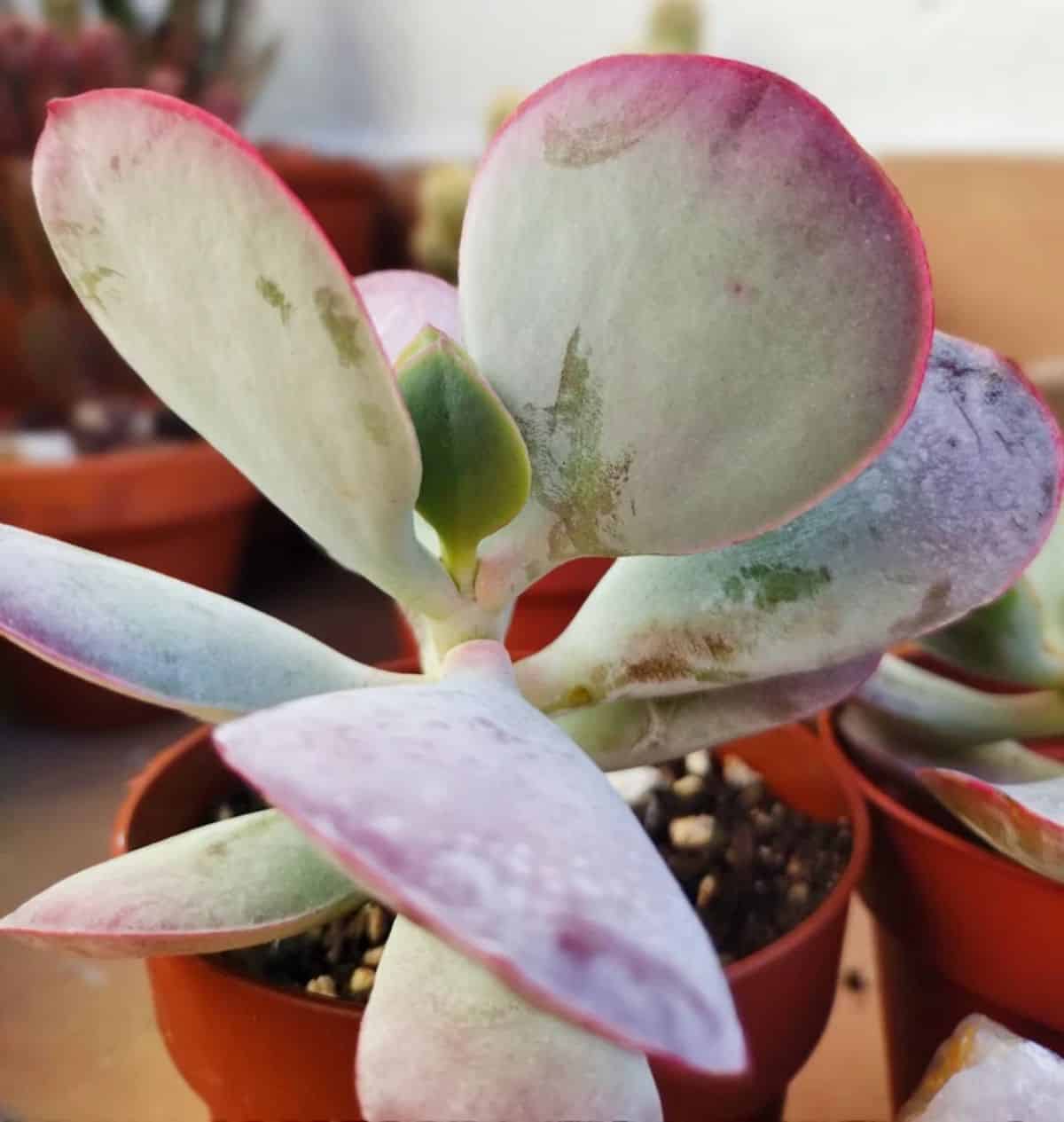
Buy it from:
| Maximum Height: | Up to 3 feet |
| Maximum Width: | Up to 3 feet |
| Watering Needs: | Bi-weekly or monthly soak based on the environment |
| Soil Needs: | Gritty well-draining mix |
| Light Needs: | Full sun to partial shade |
| Hardiness Zone(s): | Zone 9 and up |
| Leaf Type: | Much smaller leaves compared to other cultivars. Small silvery paddles with red-tipped margins |
| Bloom Type: | Orange bell-shaped flower |
Even though this species gets just as large as other orbiculata shrubs, the major difference is in the size of the paddles. They are only an inch or so in diameter but still paddle-shaped. They maintain the characteristic red margins; however, it is only towards the tips of leaves instead of all the way around the paddles.
14. Cotyledon orbiculata 'Big Wave'
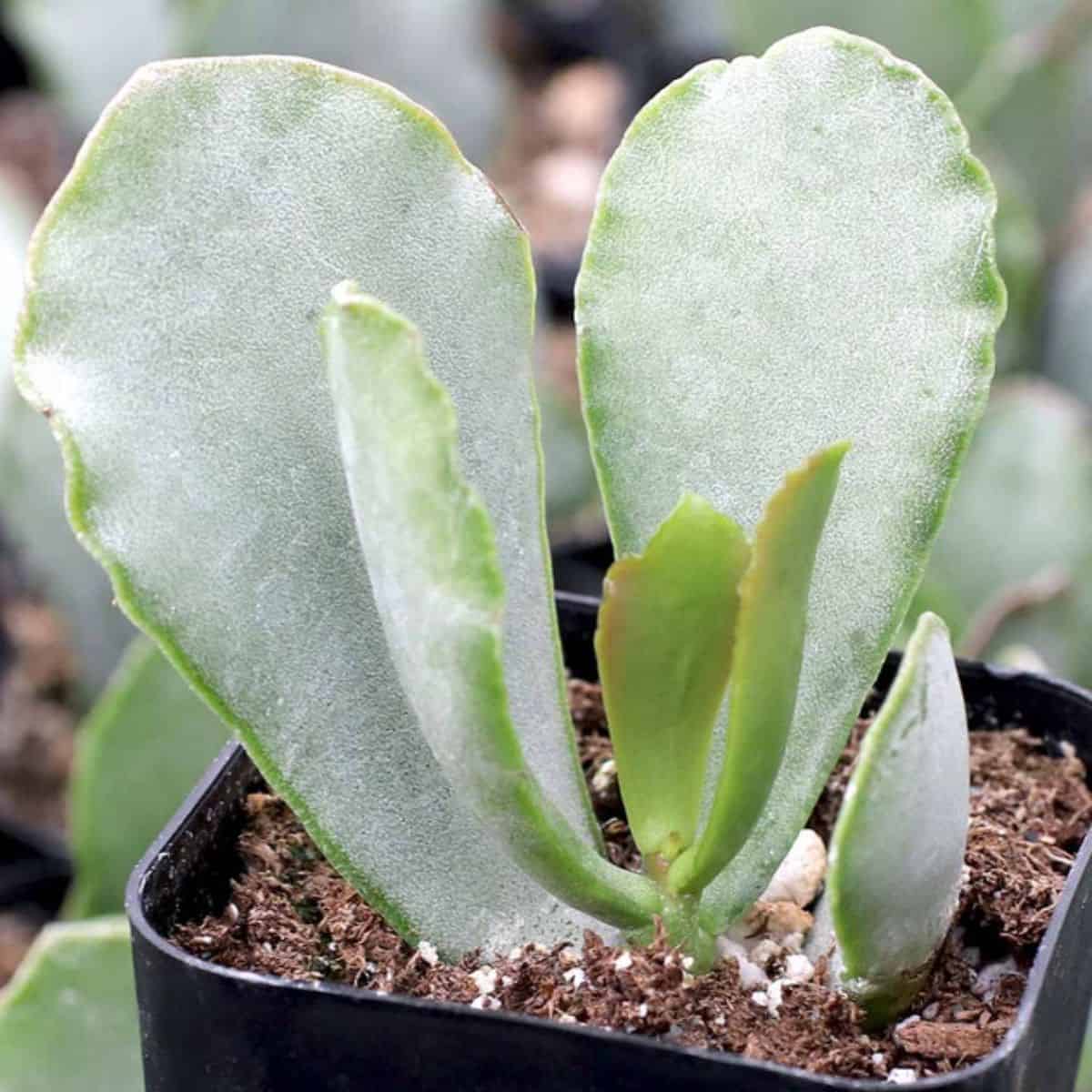
Buy it from:
| Maximum Height: | Up to 3 feet |
| Maximum Width: | Up to 3 feet |
| Watering Needs: | Bi-weekly or monthly soak based on the environment |
| Soil Needs: | Gritty well-draining mix |
| Light Needs: | Full sun to partial shade |
| Hardiness Zone(s): | Zone 9 and up |
| Leaf Type: | Lance shaped and undulate. Minimal red margin that turns orange in direct sunlight. |
| Bloom Type: | Orange bell-shaped flower |
In total contrast to Cinderella, Big Wave paddles can get up to six inches in length and five inches in width! Strangely enough, it stays within a three-foot shrub-like figure. The paddles are also drastically thinner than other species, and it does maintain the characteristic red margin.
15. Cotyledon Orbiculata Var. Elk Horns
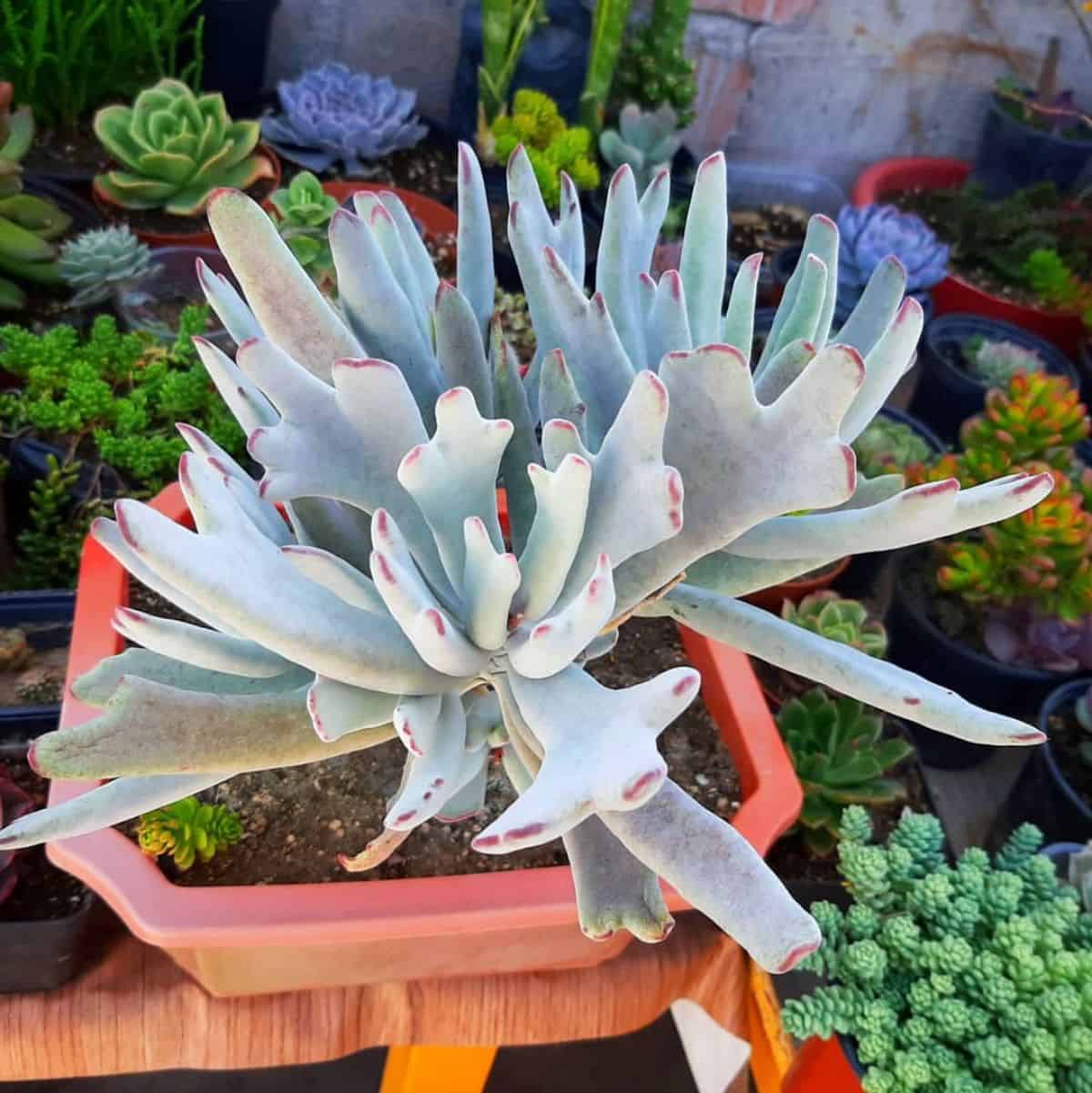
| Maximum Height: | Up to 1 foot |
| Maximum Width: | Up to 18 inches |
| Watering Needs: | Bi-weekly or monthly soak based on the environment |
| Soil Needs: | Gritty well-draining mix |
| Light Needs: | Full sun to partial shade |
| Hardiness Zone(s): | Zone 9 and up |
| Leaf Type: | Elongated lance-like leaves with pronged ends. Some leaves may only have one prong. Rarely has red-tipped leaves. |
| Bloom Type: | Outside is orange, and inside of bell-shaped flower is yellow. |
A bushier type and uniquely shaped variant, Elk Horns is a more common cultivar for collectors. You may have to go to local nurseries to find this species more easily, but it can be found online. With elongated columnar leaves and prongs at the end of each leaf, it’s easy to see why this cultivar is called Elk Horn.
16. Cotyledon orbiculata ‘Happy Young Lady’
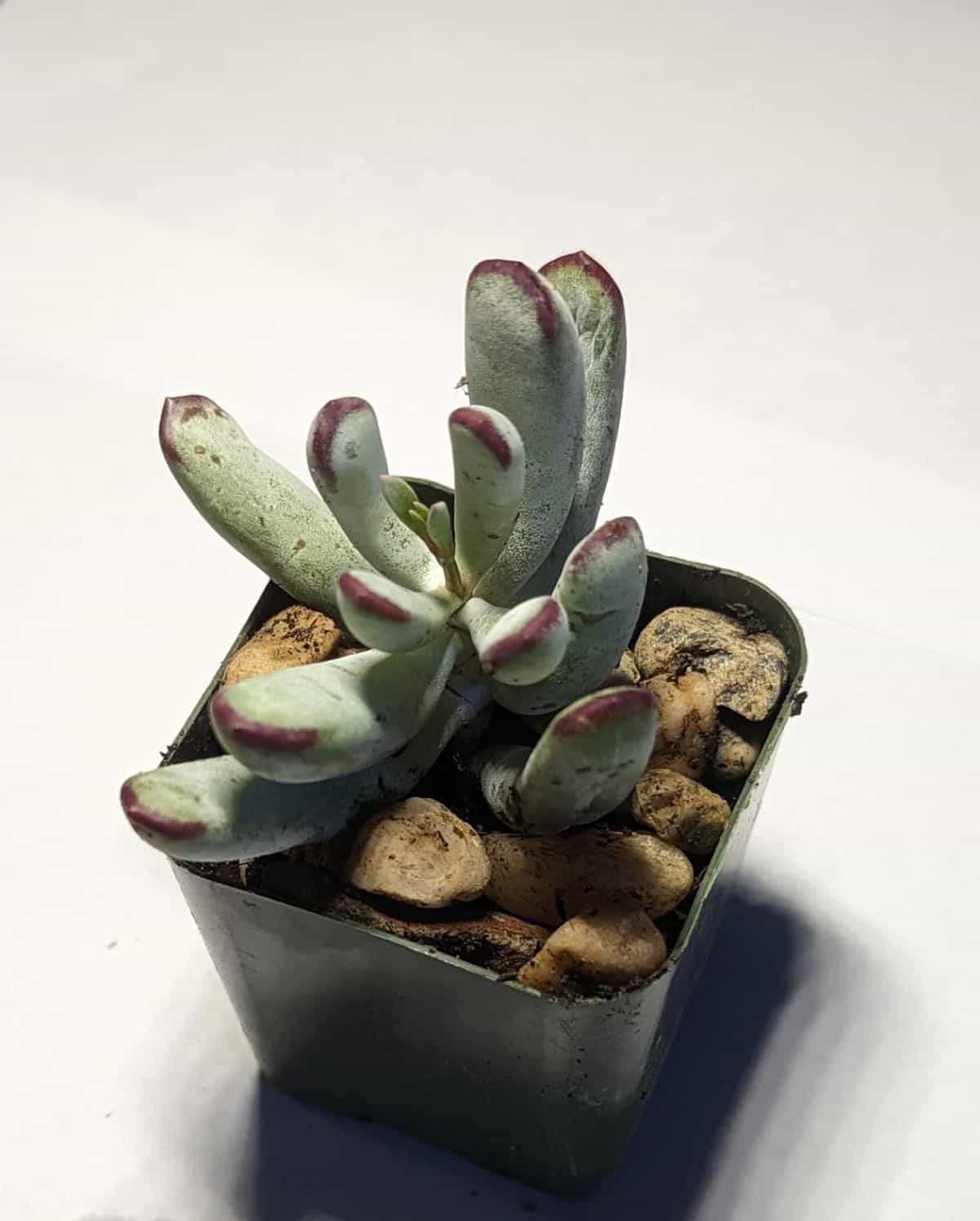
Buy it from:
| Maximum Height: | Up to 2 feet |
| Maximum Width: | Up to 1 foot |
| Watering Needs: | Bi-weekly or monthly soak based on the environment |
| Soil Needs: | Gritty well-draining mix |
| Light Needs: | Full sun to partial shade |
| Hardiness Zone(s): | Zone 9 and up |
| Leaf Type: | Thick finger-like to wedge-shaped leaves with distinct red/maroon tips. A heavy coating of farina on olive green leaves. |
| Bloom Type: | Pink bell-shaped flowers |
One of the distinct elongated varieties of orbiculata, Happy Young Lady tends to look like thicker wedge-shaped fingers with maroon tips. The maroon margins are thicker than normal and cover the entire tip of the leaf but don’t continue all the way down the leaf.

